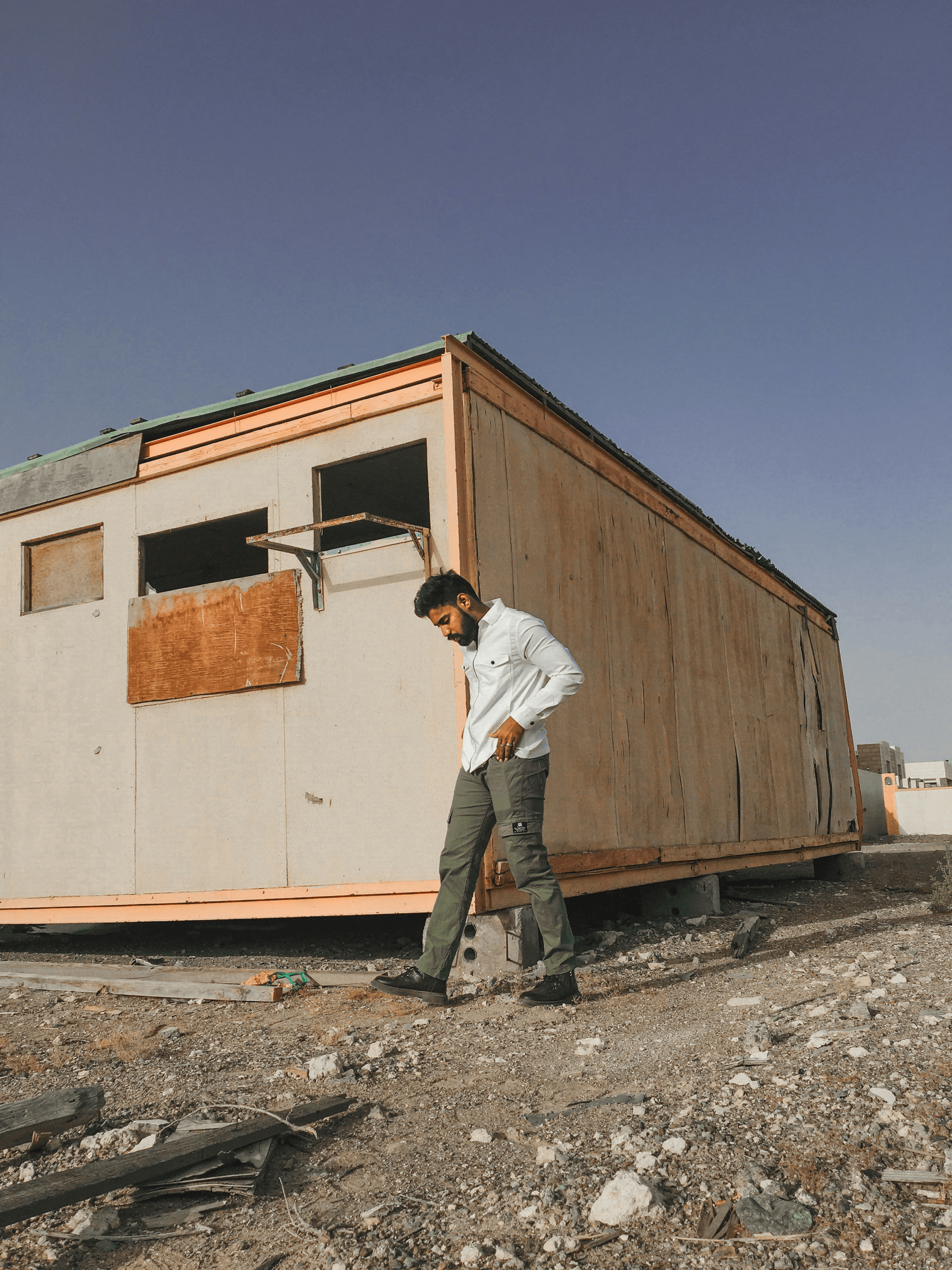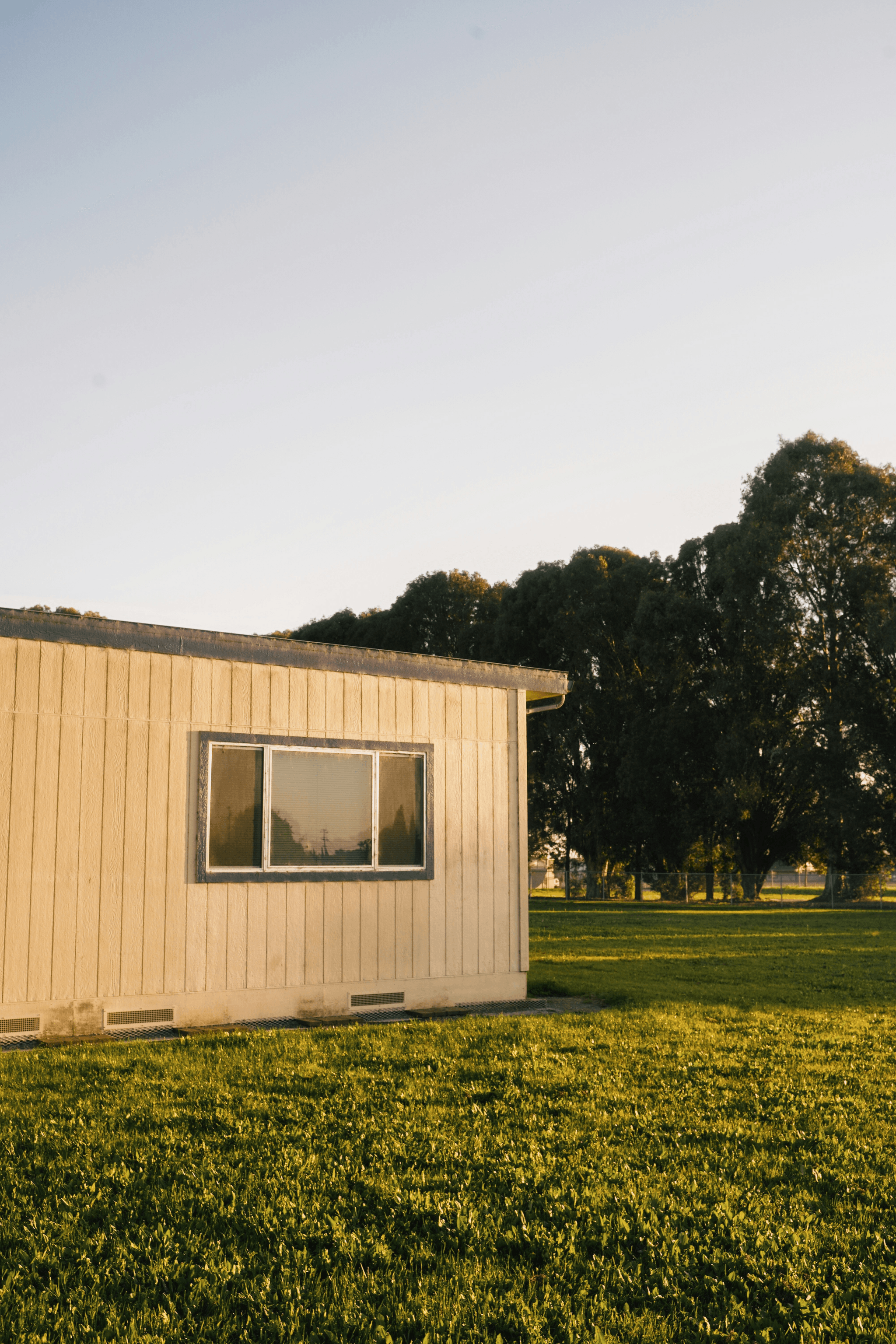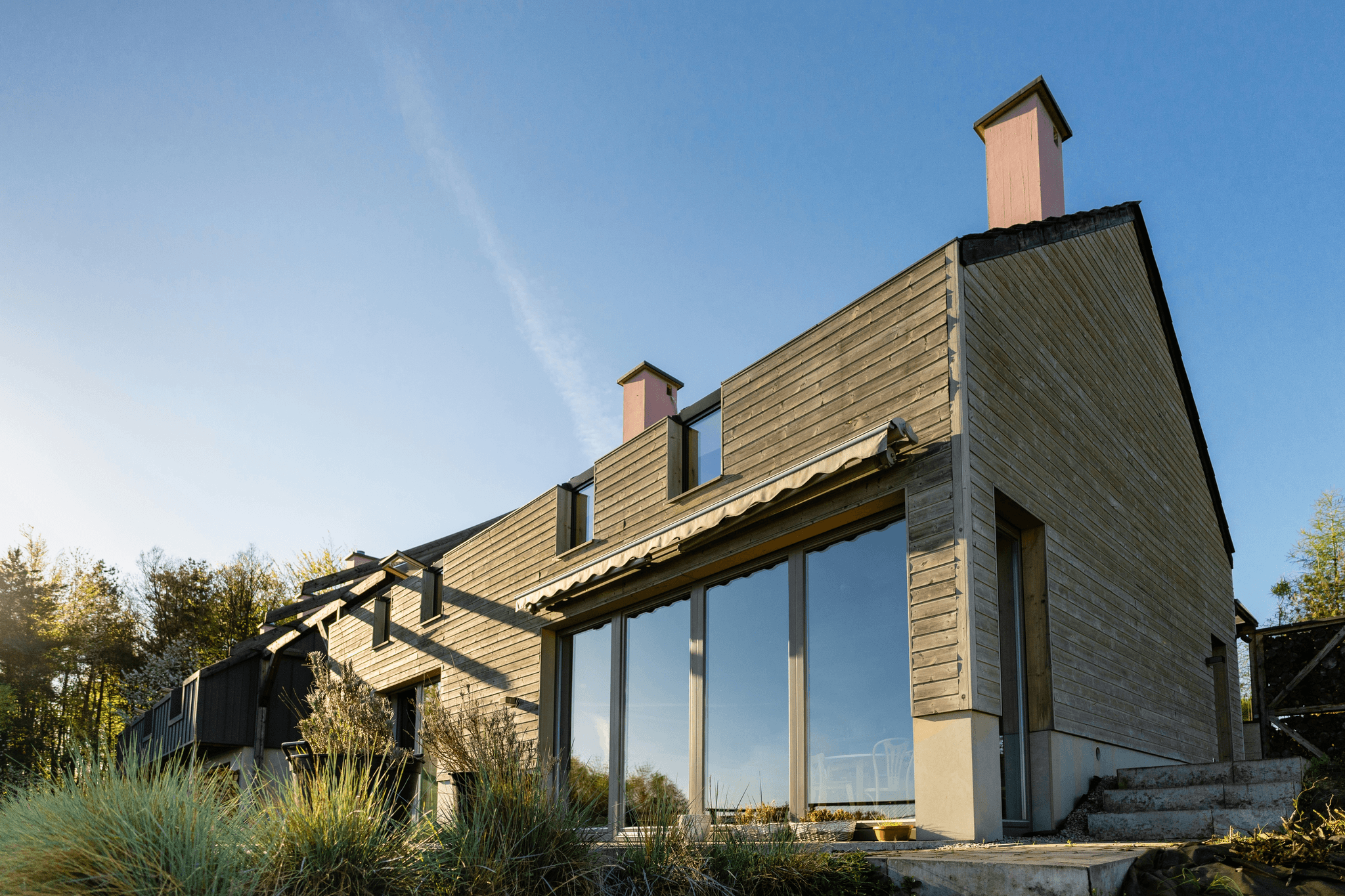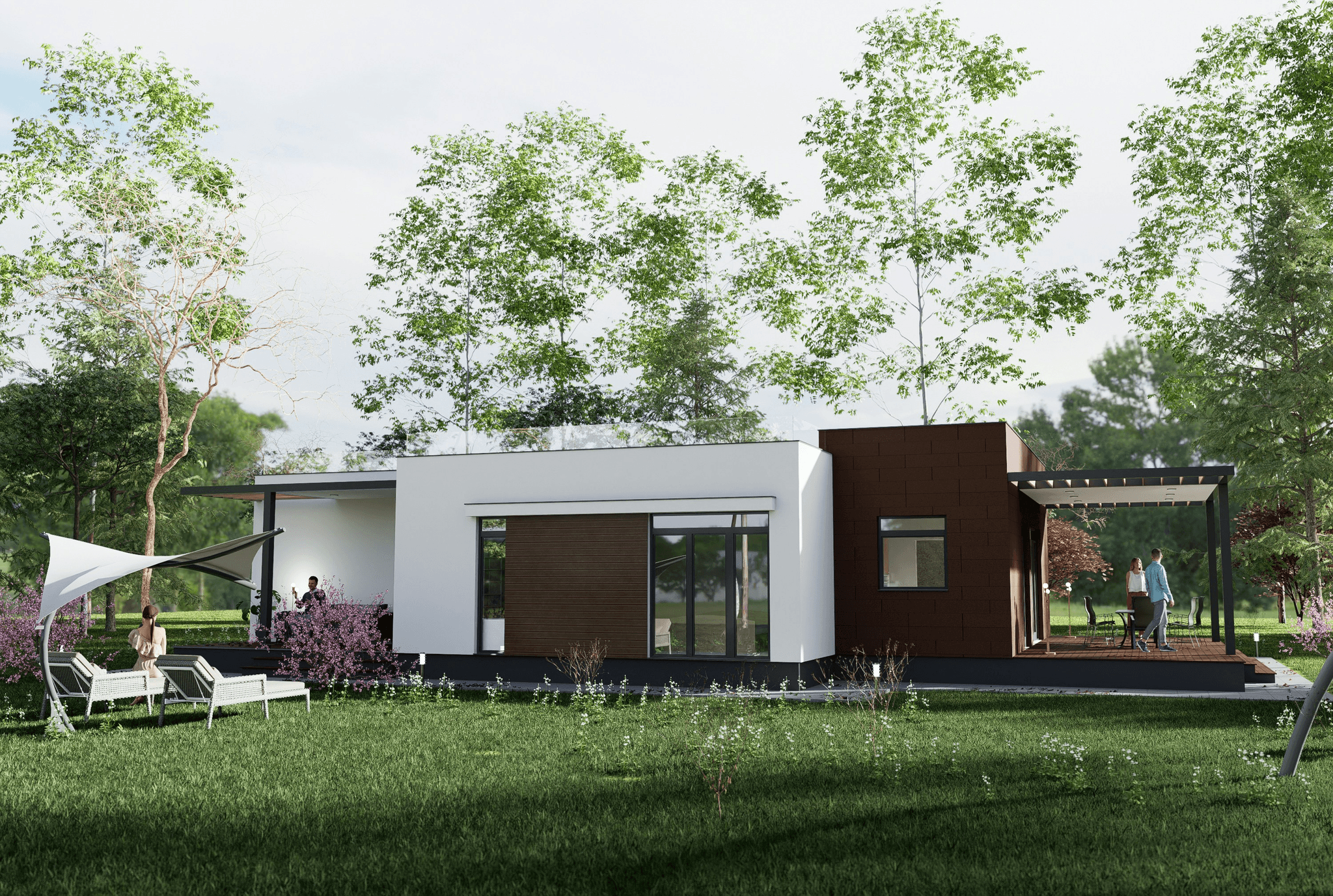Introduction
In the ever-evolving world of construction, the debate between prefab and traditional building methods has become increasingly relevant. As more homeowners seek efficient and cost-effective solutions, understanding whether is prefab cheaper than building has emerged as a crucial question. This exploration not only highlights the financial aspects but also delves into the broader phenomenon of prefabricated homes.
Exploring Prefab vs Traditional Building
Prefab construction refers to homes built off-site in a controlled environment before being transported and assembled on location. In contrast, traditional building involves on-site construction where materials are delivered and assembled over an extended period. The allure of prefab lies in its promise of speed and efficiency, prompting many to wonder if is prefab cheaper than building truly holds up under scrutiny.
The Cost Debate: A Close Look
When analyzing costs, it’s essential to consider both initial expenses and long-term savings associated with each method. Many potential homeowners are curious about whether is prefab cheaper than building when factoring in labor, materials, and time efficiency. With companies like PreFab Inc., which specialize in innovative designs at competitive prices, the cost debate becomes even more intriguing as we weigh all variables involved.
Understanding the Prefab Phenomenon
The rise of prefab homes is not just a trend; it reflects a significant shift in how we approach housing solutions today. With increasing urbanization and demand for affordable living spaces, many are turning to prefabricated options that promise quicker builds without sacrificing quality or style. As we dive deeper into this phenomenon, we'll uncover why so many are asking themselves if is prefab cheaper than building is indeed an accurate assessment.
What Is Prefab Construction?

Prefab construction, short for prefabricated construction, refers to the process of assembling buildings from components manufactured off-site. These components are created in controlled factory settings and then transported to the building site for quick assembly. This method contrasts sharply with traditional building techniques, which often involve constructing structures entirely on-site, making prefab a fascinating option for modern homebuyers.
Defining Prefab and Its Types
When we dive into prefab construction, we encounter several types: modular homes, panelized homes, and manufactured homes. Modular homes consist of sections or modules that are built in factories and then transported to the site for assembly. Panelized homes involve pre-cut panels that serve as walls and roofs but require more on-site labor than modular options; meanwhile, manufactured homes are built on a permanent chassis and can be moved if necessary.
Understanding these distinctions is crucial when asking yourself if prefab is cheaper than building a traditional home. While each type offers unique advantages and price points, many homeowners find that modular options often provide the best balance of cost efficiency and quality.
Key Benefits of Prefab Homes
One of the standout benefits of prefab homes is their cost-effectiveness; many potential buyers frequently wonder if prefab is cheaper than building traditionally. The streamlined manufacturing process reduces labor costs significantly while minimizing material waste—factors that contribute to lower overall expenses. Additionally, because prefab structures can be assembled quickly on-site, homeowners save money on prolonged construction timelines.
Another perk? Energy efficiency! Many prefab designs incorporate sustainable materials and advanced insulation techniques right from the get-go, leading to long-term savings on energy bills—an appealing factor when contemplating whether investing in a prefab home makes financial sense compared to traditional builds.
Popular Prefab Companies: PreFab Inc.
Among the notable players in this burgeoning field is PreFab Inc., a company dedicated to revolutionizing how we think about housing solutions. They offer an array of customizable options tailored to fit various budgets while ensuring quality craftsmanship at every stage—from design through delivery. With PreFab Inc., you can explore whether your dream home can indeed be realized at a fraction of what you'd typically spend with conventional methods.
As you consider whether prefab is cheaper than building your new abode, remember that companies like PreFab Inc. not only focus on affordability but also prioritize sustainability without skimping on style or comfort—making them an excellent choice for eco-conscious consumers looking for innovative housing solutions.
Cost Analysis of Prefab Homes

When considering the financial aspects of construction, one question often arises: is prefab cheaper than building traditionally? The answer isn't as straightforward as it might seem. Prefab homes can offer significant cost savings, but a detailed analysis reveals the nuances behind the numbers.
Breakdown of Prefab Costs
To determine if prefab is cheaper than building, it's essential to understand the specific costs involved in prefab construction. Generally, costs are categorized into materials, labor, and transportation. For instance, with companies like PreFab Inc., bulk purchasing and factory assembly streamline expenses, leading to lower overall costs compared to traditional methods where labor and material prices can fluctuate dramatically.
Prefab homes often come with a fixed price that includes design, manufacturing, and delivery—allowing homeowners to avoid unexpected expenses that can arise in traditional builds. Additionally, because these homes are built off-site in controlled environments, there’s less waste and fewer delays due to weather or on-site issues. This efficiency contributes to making prefab options financially appealing for many buyers.
Comparing Prices: Prefab vs Traditional
Now let's dive deeper into the age-old debate: is prefab cheaper than building? When comparing average prices per square foot between prefab homes and traditional constructions, many studies suggest that prefabs can be 10-20% less expensive overall. PreFab Inc., for example, provides transparent pricing structures that allow potential buyers to see where their money goes—something not always available with traditional builders.
However, while initial costs may favor prefabs, it’s crucial to consider long-term value as well. Traditional homes might offer customization options that could increase their market value over time; however, prefabs often come equipped with modern efficiencies and sustainable features that appeal to today's environmentally-conscious buyers. In essence, while both options have their merits financially speaking, the decision should align with individual needs and preferences.
Hidden Costs in Building Projects
While evaluating whether is prefab cheaper than building traditionally seems straightforward at first glance, hidden costs can complicate matters significantly. In traditional construction projects, unforeseen expenses such as permits or site preparation can quickly add up—often catching homeowners off guard. Conversely, PreFab Inc.'s transparent pricing model minimizes these surprises by including most necessary components upfront.
Another hidden cost factor involves maintenance over time; some traditional builds may require more frequent repairs or updates due to aging materials or outdated designs compared to modern prefab options which utilize durable materials designed for longevity. Moreover, energy efficiency savings from well-designed prefab homes can offset initial investment over time—making them an attractive choice financially in the long run.
In conclusion of this section on cost analysis: while both choices have their pros and cons regarding initial investment versus long-term value retention—and yes—the question remains: is prefab cheaper than building? Ultimately it depends on various factors including location specifics and personal preferences—but understanding these cost dynamics will empower you to make an informed decision moving forward.
Time Efficiency in Prefab Construction

When it comes to the race against time, prefab construction often takes the gold medal. With assembly processes streamlined and components pre-manufactured, homes can go up in a fraction of the time it takes for traditional builds. So, is prefab cheaper than building when you factor in labor costs and timelines? Absolutely!
Speed of Assembly Compared to Traditional
Prefab homes are designed for rapid assembly, often allowing for completion in weeks instead of months. While traditional construction relies heavily on weather conditions and labor availability, prefab units are built in controlled environments, minimizing delays. This efficiency not only speeds up the process but also helps answer the burning question: is prefab cheaper than building? Yes, because less time means lower labor costs.
Impact of Time on Overall Cost
Time is money—this age-old adage rings especially true in construction projects. The quicker a home can be assembled, the less money spent on labor and overhead costs. By saving significant time during construction, companies like PreFab Inc. help homeowners realize that choosing prefab could indeed be a financially savvy decision; after all, who wouldn't want to save money while getting their dream home faster?
Case Studies: Quick Turnarounds
Consider the case of a family who opted for a prefab home from PreFab Inc., which was completed within just six weeks compared to an estimated six months for a traditional build. Not only did they move into their new abode much sooner, but they also saved thousands on labor costs during that period—definitely proving that is prefab cheaper than building? Another example involves a commercial project where prefabricated offices were set up in record time; this efficiency minimized disruption and maximized productivity right from day one.
Quality Comparison: Prefab vs Traditional

When it comes to choosing between prefab and traditional building, quality is often a major concern for potential homeowners. Many wonder if prefab homes can match the durability and longevity of their traditionally built counterparts. In this section, we will delve into the durability of prefab materials, debunk common misconceptions about prefab quality, and examine industry standards and regulations that ensure high-quality construction.
Durability of Prefab Materials
Prefab homes are constructed using materials that are often engineered for strength and resilience, making them surprisingly durable. Unlike traditional building methods that may rely on local timber or varying material qualities, companies like PreFab Inc. use standardized components designed to withstand environmental stresses. This means that when you ask yourself, is prefab cheaper than building? consider not just the initial costs but also the long-term durability benefits that may save you money down the road.
Furthermore, many prefab materials are treated to resist moisture and pests, which can lead to significant maintenance savings over time compared to traditional homes. The controlled factory environment in which these components are built ensures consistent quality and minimizes defects caused by weather or site conditions during construction. So while some might question whether is prefab cheaper than building, it’s crucial to factor in how durability could lead to lower overall costs.
Common Misconceptions About Prefab Quality
One of the most prevalent myths surrounding prefab homes is that they lack quality compared to traditional builds. This misconception often stems from outdated perceptions of modular housing being flimsy or temporary solutions rather than robust living spaces. In reality, modern advancements in construction technology have allowed companies like PreFab Inc. to create high-quality homes that meet or exceed industry standards.
Another common belief is that all prefab homes look alike or lack customization options; however, today’s designs range from sleek modern aesthetics to charming rustic styles tailored to individual tastes. When discussing whether is prefab cheaper than building, it's essential not only to consider monetary factors but also aesthetic flexibility and personal expression in home design—something many traditional builds struggle with due to budget constraints.
Many people also assume that because a home is prefabricated, it must be less energy-efficient than conventional houses; this couldn’t be further from the truth! Many prefabs utilize advanced insulation techniques and energy-efficient appliances as standard features—offering homeowners both comfort and savings on utility bills.
Industry Standards and Regulations
The construction of both prefab and traditional homes is subject to rigorous industry standards aimed at ensuring safety and quality; however, many consumers remain unaware of these regulations when considering their options. Prefab manufacturers like PreFab Inc., adhere strictly to local building codes as well as additional certifications specific for modular constructions—ensuring every home meets high safety benchmarks before occupancy.
Moreover, organizations such as the Modular Building Institute (MBI) provide guidelines for best practices within the industry; thus reinforcing consumer confidence in choosing prefabricated structures without compromising on quality or safety standards. If you're still pondering whether is prefab cheaper than building, remember these regulations ensure you receive a safe investment regardless of your choice.
In conclusion, while some might initially think a traditionally built home guarantees better quality simply due to its method of construction, it's essential to reassess those assumptions with current information regarding material durability, customization options, and adherence to strict regulations governing both types of buildings.
Environmental Impact of Prefab Homes

Prefab homes aren't just a trend; they're a sustainable solution that can have a positive impact on the environment. With growing concerns about climate change and resource depletion, many are asking, Is prefab cheaper than building? The answer often lies in the eco-friendly practices that prefab construction employs, making it not only financially savvy but also environmentally responsible.
Sustainability in Prefab Building
Sustainability is at the core of prefab construction, with designs that prioritize resource efficiency and minimal waste. Unlike traditional building methods, which can lead to significant material waste on-site, prefab homes are constructed in controlled environments where resources can be optimized. This approach not only reduces excess waste but also ensures that materials are sourced responsibly—making it clear why many people wonder if is prefab cheaper than building when considering long-term sustainability.
Moreover, the modular nature of prefab buildings allows for easier disassembly and relocation compared to traditional structures. This means that if homeowners decide to move or remodel, they can do so without contributing as much to landfill waste. PreFab Inc. exemplifies this sustainable approach by utilizing recyclable materials and innovative design techniques that emphasize environmental stewardship.
Energy Efficiency: Cost Savings in the Long Run
When evaluating whether is prefab cheaper than building, energy efficiency plays a significant role in the overall cost savings associated with these homes. Prefab constructions often incorporate advanced insulation techniques and energy-efficient systems right from the get-go, leading to lower utility bills over time. Homeowners find themselves saving money while reducing their carbon footprint—a win-win situation!
Additionally, many prefab companies focus on integrating renewable energy solutions such as solar panels during construction. This foresight not only enhances energy independence but also contributes to long-term financial savings by lessening reliance on traditional energy sources. By choosing a company like PreFab Inc., homeowners can rest assured they’re investing in an energy-efficient future while pondering if is prefab cheaper than building truly reflects their financial reality.
How PreFab Inc. Incorporates Green Practices
PreFab Inc. takes pride in its commitment to green practices within its construction processes and materials sourcing strategies. From using sustainably harvested wood to incorporating low-VOC paints and finishes, every aspect of their builds is designed with environmental health in mind—making it easier for potential buyers to ponder whether is prefab cheaper than building. Their dedication extends beyond just materials; they also prioritize efficient manufacturing processes that minimize waste.
In addition to eco-friendly materials, PreFab Inc.’s designs often feature passive solar architecture principles which maximize natural light and heat retention without excessive reliance on artificial heating or cooling systems. This thoughtful integration ensures homes remain comfortable while minimizing environmental impact—further enhancing the question: “is prefab cheaper than building?” The answer is increasingly leaning towards yes when considering both upfront costs and ongoing savings.
As we look toward a more sustainable future in housing solutions, it's clear that prefabricated homes offer numerous advantages worth exploring further.
Conclusion

In the debate between prefab and traditional construction, understanding the financial implications is crucial. While many potential homeowners wonder, Is prefab cheaper than building? the answer often leans toward yes, especially when considering overall project costs. With lower material waste and faster assembly times, prefab homes can provide significant savings without compromising quality.
The Bottom Line on Building Costs
When evaluating whether prefab is cheaper than building traditionally, one must consider various cost factors. Prefab construction typically involves less labor and shorter timelines, which translates to reduced expenses overall. However, hidden costs can arise from site preparation or unexpected changes in design; thus, thorough planning is essential to ensure that your budget stays intact.
Making Informed Decisions About Prefab
To navigate the question of whether is prefab cheaper than building, it's essential to weigh both immediate costs and long-term benefits. Engaging with companies like PreFab Inc., which offer transparent pricing models and comprehensive services, can help you make an informed decision that aligns with your financial goals. Remember that investing in a quality prefab home may yield greater returns down the line through energy efficiency and lower maintenance costs.
Future Trends in Prefab Construction
As we look ahead, the future of construction seems increasingly inclined toward prefabricated solutions due to their economic advantages and sustainability credentials. More builders are acknowledging that is prefab cheaper than building is not just a passing trend but a viable approach for modern housing needs. With advancements in technology and materials, companies like PreFab Inc. are poised to lead this transformation while addressing environmental concerns effectively.

